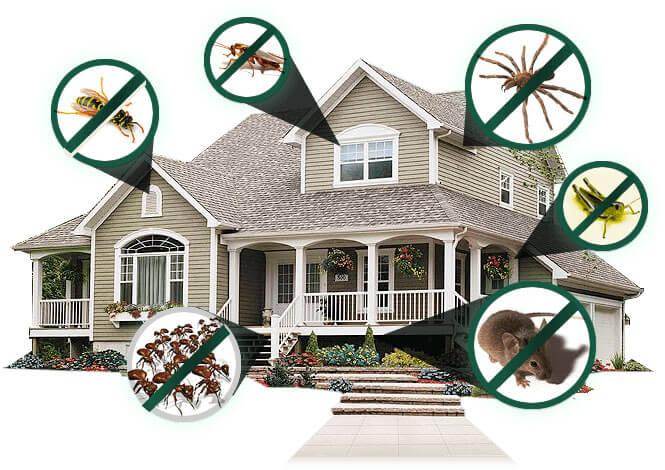Top-rated A1 Portland Bed Bug Exterminator - Top Quality You Can Depend On
Top-rated A1 Portland Bed Bug Exterminator - Top Quality You Can Depend On
Blog Article
Reliable Insect Control Providers: An Extensive Appearance at Extermination Techniques and Prevention Steps
In the realm of insect control solutions, the effective monitoring of infestations needs a thorough approach that combines different methods and actions for both eradication and prevention. From Integrated Bug Monitoring (IPM) techniques that prioritize lasting options to chemical extermination methods created for targeted removal, the collection versus parasites is vast and multifaceted.

Integrated Parasite Monitoring (IPM) Methods
Integrated Insect Monitoring (IPM) Methods encompass a detailed method to pest control that concentrates on avoidance, control, and monitoring methods to efficiently handle pest populaces. By integrating different strategies, IPM aims to reduce the influence of insects while likewise reducing the reliance on chemical pesticides. Avoidance exists at the core of IPM, emphasizing methods like correct sanitation, maintenance of hygiene, and securing entry points to hinder bugs from infesting buildings. Tracking plays an important duty in IPM by on a regular basis determining and checking parasite degrees to determine the suitable intervention limits. Control techniques in IPM focus on using physical, organic, and social strategies before turning to chemical treatments as a last hope. These techniques include introducing natural predators, habitat adjustment, and utilizing trapping tools to maintain parasite populaces in check. On the whole, IPM fosters a sustainable and eco aware technique to pest monitoring, advertising lasting remedies that guard both human wellness and the ecological community.
Chemical Extermination Techniques
Chemical elimination methods are frequently employed in parasite control services to effectively remove insect populaces that position a hazard to human health and wellness and building. These methods involve using various chemical substances especially developed to target and remove insects such as pests, rodents, and various other undesirable creatures. The application of chemicals, insecticides, rodenticides, and other chemical representatives is very carefully regulated to make sure optimum efficiency while decreasing risks to human beings, pets, and the atmosphere.
Among the essential benefits of chemical extermination methods is their ability to supply fast and targeted results, making them especially useful in instances of serious invasions or urgent insect control demands - a1 portland bed bug exterminator. Nevertheless, it is vital to stress the relevance of appropriate handling, application, and disposal of these chemical products to avoid unexpected damage
Furthermore, integrated parasite administration (IPM) methods frequently incorporate chemical extermination strategies with other techniques such as sanitation, environment adjustment, and biological controls to create a thorough and lasting pest control strategy. By integrating chemical elimination techniques sensibly within an IPM framework, pest control services can properly manage pest populations while minimizing prospective dangers to human health and the atmosphere.
Biological Pest Control Approaches
Employing all-natural predators and More Help bloodsuckers to handle pest populaces is a sustainable method recognized as biological insect control. a1 pest control in portland oregon bed bugs. One common organic control method includes introducing natural adversaries of the target insect species, such as ladybugs for aphid control or nematodes for termite invasions.
Another reliable biological control strategy is the usage of microbial insecticides. These are normally taking place microorganisms, such as fungis, viruses, and germs, that particularly target and contaminate certain parasite varieties. By using these microbial representatives, insect populaces can be properly reduced without hurting helpful organisms or causing injury to the environment.
Physical Pest Avoidance Procedures
Carrying out physical insect prevention procedures includes utilizing obstacles and architectural alterations to prevent bugs from infesting a home or getting in. Setting up door sweeps, displays on windows, and sealing cracks in the structure can help stop bugs like bugs and rats from getting accessibility indoors.
One more physical avoidance action is using obstacles like fencing to keep bigger parasites such as raccoons or visit deer far from the building. Installing mesh or cable displays around yards can safeguard plants from being damaged by parasites. Proper waste administration, consisting of safeguarding trash containers with tight-fitting covers, is important in discouraging bugs like raccoons, insects, and rodents. By implementing these physical bug avoidance measures, homeowner can substantially minimize the threat of parasite problems and the damages they can create.
Specialist Bug Assessment Procedures
Performing detailed and methodical parasite assessments is a fundamental facet of professional bug management methods. Professional parasite examiners are educated to carefully check out properties for indications of infestations, determining pest varieties, entry factors, and conducive conditions. The examination process typically starts with an extensive analysis of both the interior and exterior of the premises. This entails checking for pest droppings, gnaw marks, nests, and any type of structural damages that may suggest parasite activity. Furthermore, inspectors may make use of specialized devices such as moisture informative post meters and borescopes to find hidden problems within walls or crawl areas.

Conclusion
In final thought, reliable pest control services utilize a range of strategies, including Integrated Bug Monitoring strategies, chemical extermination methods, biological controls, and physical prevention procedures. Specialist parasite inspection procedures play an important role in identifying and dealing with pest problems in a timely way. By carrying out a mix of these techniques, homeowner can effectively handle and stop parasite problems.
From Integrated Parasite Management (IPM) strategies that prioritize lasting solutions to chemical extermination methods created for targeted elimination, the collection versus parasites is complex and substantial.Integrated Parasite Monitoring (IPM) Techniques include an extensive method to pest control that focuses on tracking, control, and prevention approaches to properly handle bug populaces.Chemical extermination techniques are typically utilized in insect control services to properly remove parasite populations that pose a hazard to human health and wellness and building.Using natural predators and parasites to handle pest populaces is a lasting method recognized as organic parasite control.In conclusion, effective insect control solutions use a variety of techniques, consisting of Integrated Bug Management approaches, chemical extermination techniques, biological controls, and physical prevention actions.
Report this page